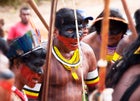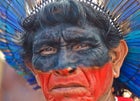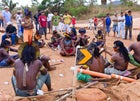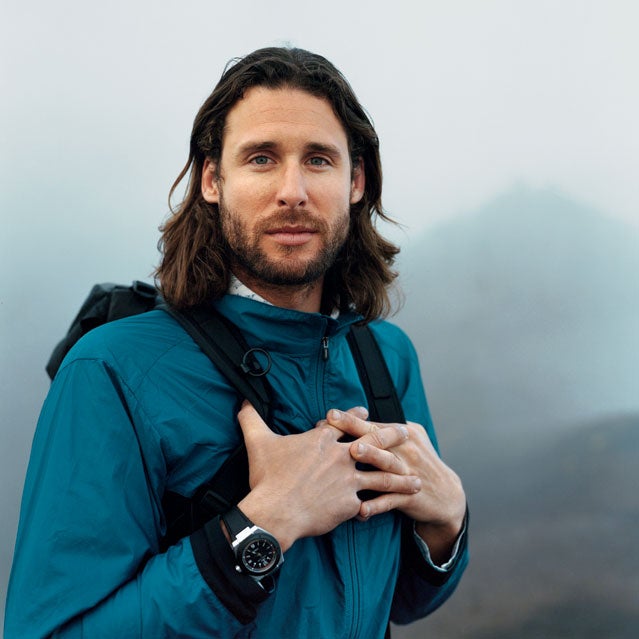David de Rothschild has hiked to both poles to slow global warming and raised awareness about oceanic pollution by sailing across the Pacific in a boat made of recycled plastic. For his latest altruistic adventure, the 33 year old will paddle down Brazil’s soon-to-be dammed Xingu River with a totem pole—we’ll explain. He hopes to drum up media attention and help halt the construction of the world’s third largest dam, the $19 billion Belo Monte. Caty Enders caught up with de Rothschild at his home in Los Angeles before a two-week expedition into the Amazon.
Tribes organize in opposition to the Belo Monte dam
 Tribes organize in opposition to the Belo Monte dam
Tribes organize in opposition to the Belo Monte damTribes organize in opposition to the Belo Monte dam
 Tribes organize in opposition to the Belo Monte dam
Tribes organize in opposition to the Belo Monte damTribes organize in opposition to the Belo Monte dam
 Tribes organize in opposition to the Belo Monte dam
Tribes organize in opposition to the Belo Monte damA stop sign implicates the Belo Monte dam
 A stop sign implicates the Belo Monte dam
A stop sign implicates the Belo Monte damWhat message are you sending by paddling a totem pole down a river?
I’m working with two tribes, the Arana and Juruna, that the dam threatens to displace. They share a legend that says there’s a fork that holds up the sky. When the fork collapses, the sky falls down and the communities disappear. The totem represents that fork. After it’s built, we’ll load it into a boat and paddle it roughly two-days downstream of the village and erect it at the dam site. When construction begins, the totem will be knocked down, symbolizing the end of the Arana and Juruna’s communities.
There are lots of environmental issues to choose from, what stuck out to you about the Belo Monte dam?
When someone says, Hey, listen there’s a hydroelectric dam being built, your gut reaction is to say, ‘Oh, wow, that’s really positive! Water energy doesn’t burn fossil fuels!’ But there’s a lack of transparency surrounding hydroelectricity. It often comes with a very nasty, toxic, and destructive shadow. Belo Monte threatens to choke one of the Amazon’s biggest tributaries, flood more than 150-square miles of rainforest, and displace nearly 20,000 people—many of whom rely on the land for their way of life.
James Cameron and the cast of Avatar also ventured down to the Amazon last year to show their opposition to the Belo Monte—why is there so much concern right now?
A lot of the dam’s potential impacts haven’t even been studied. Back in October, 2010, Brazil’s environmental agency granted Norte Energia, the consortium overseeing the dam project, a construction license even though 23 of 40 social and environmental mitigation conditions hadn’t been met. Despite this, they’re moving forward with construction and have already started clear-cutting near the dam site.
In an Outside profile back in 2009, you asked, “How do we go from awareness to a tangible solution?” Let me put that question to you.
The first thing is to recognize that in a case like this—where it’s still being disputed and there’s still a lot of misinformation—it’s really important to create narratives that get attention and show people the direct outcome of their consumption. The WWF put out a report in 2007 that says by investing in energy efficiency, Brazil could actually cut its energy use by 40% by 2020. That power savings is the equivalent of 40 Belo Monte dams. It’s insane. Individual changes can add up to have a global impact.
Considering that the wheels are already in motion, what can be done?
Listen, I’m under no illusion that the expedition we’re undertaking is going to stop the dam. It would be naïve to think that this mini art-based adventure into the Amazon is going to change what has been in motion for the last 36 years. But when you see someone in the road and they’re dying, do you keep walking and say, Oh, they’ll be dead soon? That’s the reality when you embark on an adventure like this, you may never know the true outcome until many years later.
To follow David de Rothschild and his team, check out Myoo.com.

